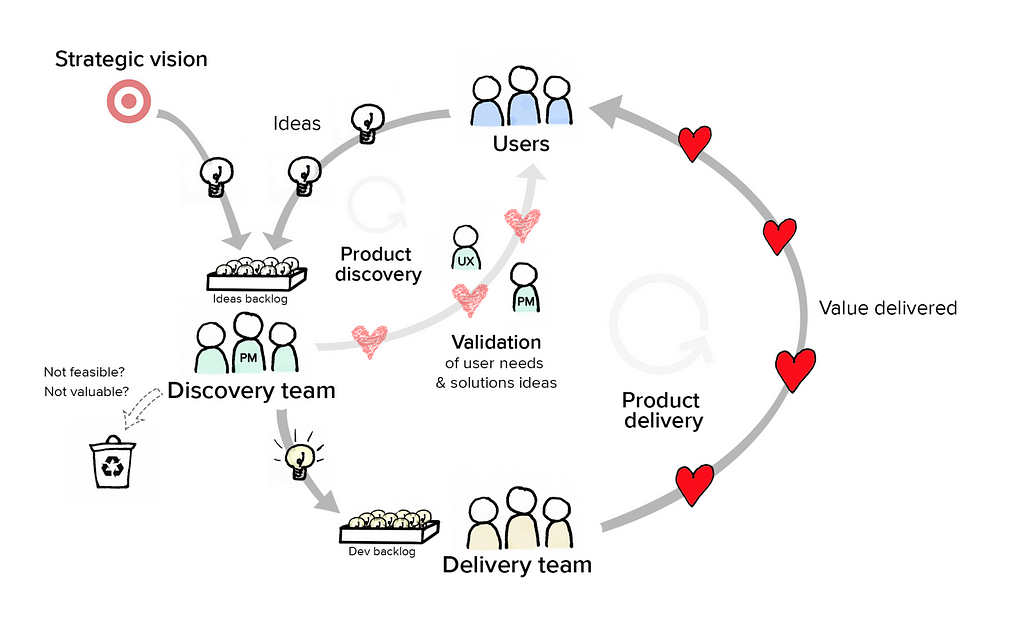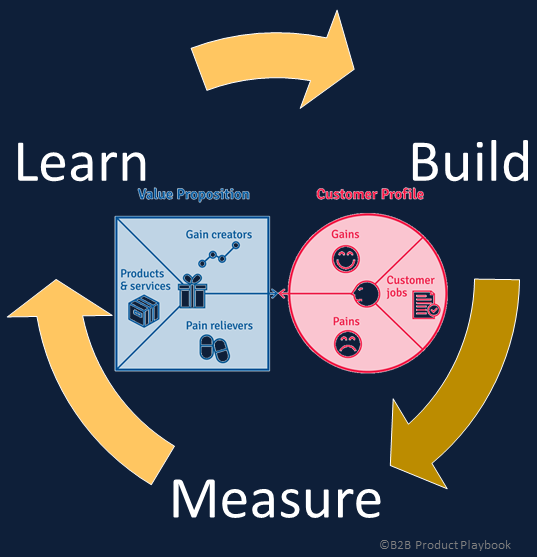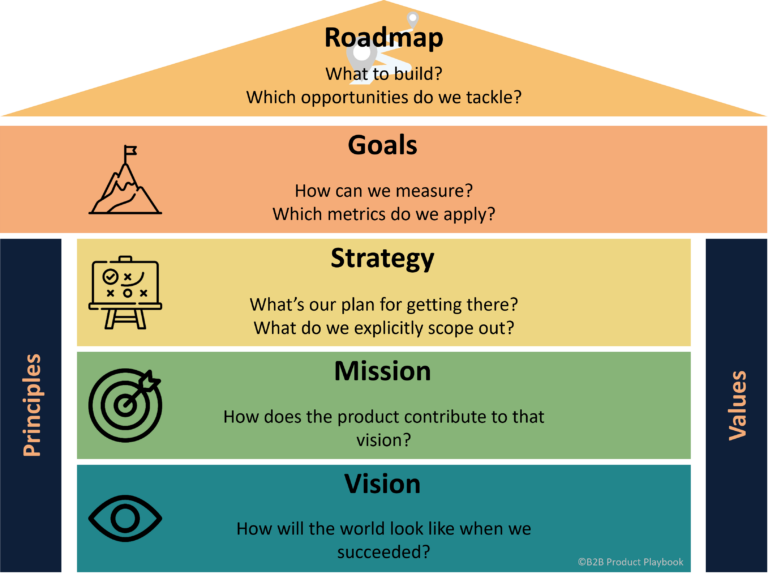StartUp vs. ScaleUp
This entire playbook reflects experiences collected while working at multiple companies, all of which have been ScaleUp businesses with sustained growth. Depending on the stage or scale of growth, some Product Management principles might differ, so we think it’s worth defining the type of companies we are addressing:
Understanding Stages of Businesses
Companies, both B2B and B2C, typically go through several stages each of which comes with its own characteristics. We don’t want to go into the details of each phase here but only highlight some key aspects.
- StartUps in the seed stage or early funding stage are typically small teams pre-revenue. Their primary focus is on experimenting and iterating their offering to find product market fit. This also is characterized by less mature operations, processes that are typically more ad hoc, and organizational roles not yet well defined. Beyond the product, also the business model might still not be clear yet.
- Compared to that, ScaleUp (or growth stage) companies already have larger teams, with some initial organizational structure and areas of responsibility. Most importantly, ScaleUps have shown a product-market fit from which they generate significant revenue streams. As the name suggests, their main goal is to scale their business and to reach a broader audience — for which most often additional funding is raised. In addition, ScaleUps will constantly improve their maturity in terms of operational processes such that the organization can efficiently handle the growth. Given the existing revenue, the main elements of the business model have been established and will be optimized. These organizations may or may not yet be profitable depending on investments in growth.
- After ScaleUp, companies may move into the expansion stage focused on maintaining their growth trajectories while improving profitability. Often, that includes expanding into new geographies, extending product lines, strategic partnerships as well as mergers and acquisitions.
- A mature company has somehow reached a plateau in terms of business, market reach, and profitability. It’s well-established and has a proven product and business model as well as steady revenue streams based on a stable customer base. The main focus is to maintain its market position, potentially supported by partnerships or acquisitions.
- Finally, a company at the decline stage will experience declining revenues, market shares and/or profitability. Disruption is a key aspect here when markets change completely, new technology is being introduced and competitors emerge — most likely being StartUp or ScaleUp companies.
From Founder-led to Spider in a Web
Founders are responsible for defining a StartUp’s vision, mission, and long-term goals. For that, most input into strategy and roadmap will come from them. In fact, some of them will act as Chief Product Officers — regardless of whether they have that title or a different one. Additionally, the company is small enough to allow founders to directly engage with everybody.
From Early Ideation to Customer Discovery
From Focus on Value to PMF and Beyond
Once a working solution for a customer problem has been found, it is important to address product-market fit (PMF). This implies that not only do customers want the product but also that appropriate strategies for Marketing and Sales are in place and the product can be built, sold, distributed, and operated in a profitable manner. Hence, the responsibilities of Product Management go far beyond just building features:
From Seed Funding to Serious Investors
Typically, companies are going through various stages in terms of financial investors. And while there are no strict boundaries and lots of variations in that process, a ScaleUp company will usually have way more demanding investors. They will challenge strategy and execution; they will require more formal decision-making and specific reporting structures; they might even participate by way of Boards of Directors. Specifically for the Product Management leader, most notably a Chief Product Officer, will have to be able to speak up, convince, and win that group.
From an Idea on a Napkin to a Well-Shaped Strategy
Once the company has grown to be a ScaleUp, it’s essential to precisely define its mission, vision, and strategy. Even beyond that, communication of the strategy and how it impacts the roadmap becomes a key responsibility of the Product Management team so that these are fully transparent to every single employee. Every. Single. One. Of. Them.
More on that topic in part 2 of this playbook.









